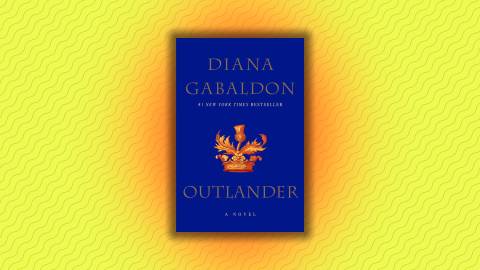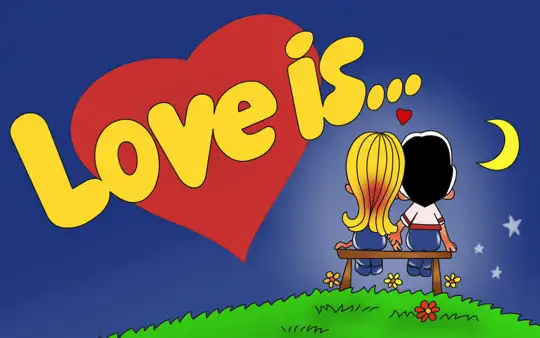Readers have swooned over Jamie Fraser’s love for his time-traveling wife Claire since 1991. The two are the stars of Diana Gabaldon’s Outlander series, a genre-bending whirlwind of romance, historical, and science fiction that has also become a hit Starz television show. Here are a few facts you should know about the novel and the book series it launched.

1. Diana Gabaldon never intended to publish Outlander.
If Gabaldon had stuck to her original plans, Outlander never would have become the sensation it is today. When she started writing the novel, she never intended for anyone to read it, let alone publish it—it was originally just a practice book. But after getting into an argument with a man on an online forum about what pregnancy feels like, she published a section of her draft in which a character vividly recounts her pregnancy. Gabaldon posted additional pieces of the story at the request of other forum readers; one of them ultimately put her in touch with the literary agent who went on to help her score a three-book contract.
2. Outlander was partially inspired by Doctor Who.
You’d be forgiven for thinking a foray into Scotland’s dreamy landscape inspired Outlander. But Gabaldon didn’t set foot in the country until after she’d received some of the book’s advance money. It was a popular science fiction franchise, not real-world experience, that sparked the series.
While noodling on potential ideas for her practice novel, Gabaldon watched “War Games,” an old Doctor Who rerun on PBS—and spotted the character Jamie McCrimmon. The Scotsman, played by Frazer Hines, gave her an idea. Soon, Gabaldon was penning her own fantastical tale set in 18th-century Scotland.
But apart from the ruggedly beautiful setting and a handsome man in a kilt—plus, of course, a fair amount of time travel—the two series share little in common. Instead of hurtling through time and space in a boxy contraption, the time-traveling Outlander characters step through mysterious portals, aided by genetic luck and some gemstones. Gabaldon did pay homage to her inspiration, though; Jamie Fraser’s first name is a nod to the Doctor Who character.
3. Outlander was originally meant to be a historical novel.
People have yet to reach a consensus on which bucket of literature the Outlander series belongs in. The books are a blend of historical fiction, science fiction, mystery, and fantasy—and the regular risqué bedroom scenes add some strong romance elements, too. But Gabaldon didn’t intend to burst onto the literary scene with a masterpiece mishmash of genres. Originally, she planned for Outlander to be a historical novel.
The arrival of Claire, a 20th-century World War II nurse, changed that. “The time-travel was all her fault,” the author writes on her website. She concocted the character on her third day of writing, and before long, she was telling the story from her point of view, braiding together two worlds two centuries apart. Time travel was Gabaldon’s way of plugging the modern protagonist into the 18th-century tale she’d started crafting. Elements of the story are based on fact, though. The Jacobite Rebellion and 1746 Battle of Culloden, which feature heavily in the series’ earlier books, are real historical events. In fact, you can even visit a memorial to the real Clan Fraser and other Highland fighters at the Culloden Battlefield—just make sure you treat the area with respect.
4. Outlander was called Cross Stitch when it was published in the UK.
Gabaldon originally titled her novel Cross Stitch, in reference to the saying “a stitch in time.” She ultimately went with Outlander at the request of her U.S. publishers, but kept the original title for the book’s UK release. (She also suggested Sassenach as a title, but her publishers were worried people wouldn’t know how to pronounce it.)
5. Writing the Outlander books requires a lot of research.
Gabaldon researches as she writes, piecing together bits of plot laced with historical details. She used a whopping 2200 books for her core research. Claire’s botany skills and knowledge of healing plants comes from the author’s century-spanning collection of more than 100 tomes on herbs and folk medicine; her more modern medical skills were pulled from surgeons’ memoirs and history of medicine books. Nonfiction works on weaponry and battle history inform the many skirmishes Jamie and his fellow men often find themselves pulled into, and a hearty mix of dictionaries and Britain-based novels dictate the characters’ speech. (Gabaldon originally cobbled together the books’ Gaelic phrases from a dictionary, then later received aid from a native speaker.)
6. Gabaldon has used her science background while writing the Outlander books.
Though Gabaldon’s books have brought her international acclaim as an author, her background is actually in science. She earned a bachelor’s degree in zoology, a master’s degree in marine biology, and a Ph.D. in quantitative behavioral ecology. As a master’s student, she studied hermit crabs; as part of her Ph.D. research, she examined the nest selection habits of pinyon jays, which included squirting syringes of water down nestlings’ throats to see what they ate. After becoming an expert in scientific computation while working as a professor at Arizona State University, Gabaldon set her sights on writing a novel.
Gabaldon drew on her science background while penning one particularly grisly scene for Dragonfly in Amber, book two in the series. Her postdoctoral work at the University of Pennsylvania involved butchering seabirds and using a hammer and chisel to remove their brains. According to Gabaldon’s website, that gory skill helped her create the description of drawing and quartering featured in the book.
7. Gabaldon categorizes her Outlander characters in an unusual way.
Gabaldon’s way of describing the types of Outlander characters she crafts sounds a bit like a grocery list: There are mushrooms, onions, and hard nuts.
According to the author, characters like time-traveling Scottish nationalist Geillis Duncan and Jamie’s acquaintance-turned-friend Lord John Grey simply “pop up like mushrooms” while she writes: “I’ll be writing along, generally just slogging or writing randomly, hoping to work myself into the day’s piece, and all of a sudden this … this … person shows up and walks off with the whole thing,” she writes on her website. “No need to ask questions, analyze, or consciously ‘create’; I just watch in fascination, to see what they’ll do next.” Others, such as Claire and Jamie, are onions who “develop slowly through the addition of multiple layers of personality.”
And then there are the hard nuts, like Jamie and Claire’s daughter Brianna, who must exist to serve the narrative—and they’re the toughest for Gabaldon to crack: “These are the most difficult for me to animate; the characters whose function in the story is structural—they’re important not because of personality or action, but because of what role they play.”
8. Gabaldon doesn’t use an outline when writing the Outlander books.
Rather than relying on an outline, Gabaldon composes the stories in bits and pieces. Those small fragments eventually come together to form larger blocks, which she then uses to help structure the plot. “It's like playing Tetris in your head,” she said in a 2014 Goodreads interview. “They build up into larger, contiguous chunks.” She doesn’t write chronologically, either, opting to instead hop throughout various parts of the narrative.
Her seemingly disorganized approach has served her well so far: It lets the stories evolve as she needs them to—and prevents them from getting stuck or arriving at a narrative dead-end. She once recalled a conversation she shared over breakfast with her friend George R. R. Martin, who has notoriously kept Game of Thrones fans waiting for the next book in the series to drop. “We were talking about what we were doing and I said, ‘How’s the book going George?’ and he said, ‘Well I’m having trouble with it, I’ve kind of painted myself into a corner, have you ever had that happen?’’ she remembered. “I said, ‘Well no George, actually I haven’t.’ I said, ‘It’s not that hard, if you find yourself in a corner, all you do is change the color of the paint and paint yourself back to the door.’”
9. An Outlander character has his own book series.
Lord John Grey made his Outlander debut in Dragonfly in Amber and appears as a minor character in several other novels in the series. Gabaldon describes him as a complex character: He’s a nobleman’s son and an army officer, and he’s also secretly gay—which, back then, carried the threat of capital punishment.
Gabaldon decided to flesh the character out a bit more in a short piece for 1998’s Past Poisons: An Ellis Peters Memorial Anthology of Historical Crime. Her story, “Lord John and the Hellfire Club,” was a hit. She later penned other novels and novellas about the character. The Lord John Grey Series takes place during the timeframe of Voyager, the third book in the Outlander series.
10. Gabaldon has said the Outlander series will have a happy ending.
There are currently nine main books in the Outlander series, with a 10th in the works; Gabaldon isn’t sure if her untitled work-in-progress is the last readers will see of Jamie and Claire. Though fans don’t know when the stories will end, the author has hinted about how they will end: happily. “The last book will have a happy ending, though I confidently expect it to leave the readers in floods of tears, anyway,” she once said.
Related Tags
SCIENCE BOOKS WRITING TRAVEL SCIENCE FICTION History LITERATURE WAR MEDICINE TELEVISION
